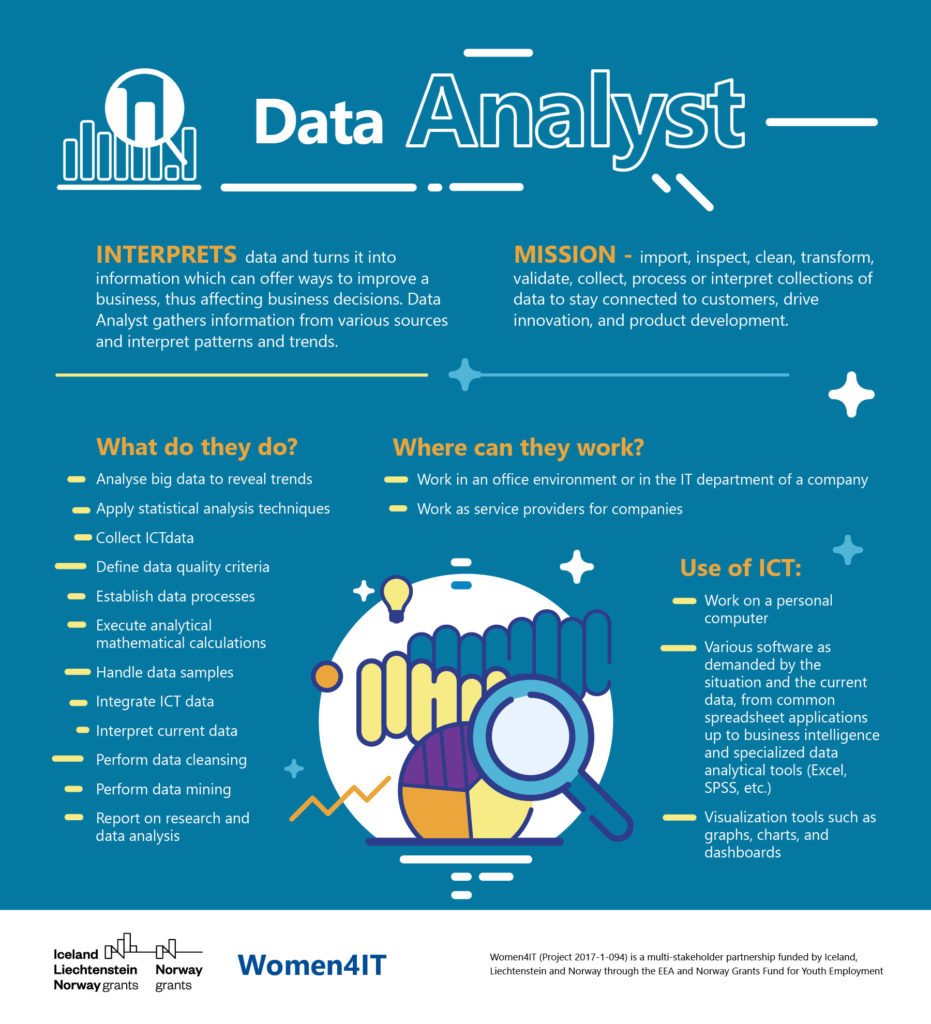How to boost your digital career, you ask? Focusing on developing your digital skills is key. But should you learn ALL things digital to take your career to the next level?
Sure – if you have time, of course. Instead, we recommend you hold your horses and start learning the smart way.
First, take a step back and think about what you would like to do professionally. What do you enjoy doing? What are you good at? Where do you want your career path to lead to?
To help you in this process, we have developed 8 Digital Jobs Profiles that we found to be the most in demand across European employers. In upcoming weeks, we will be releasing a breakdown of all Digital Job profiles.
Each week, you will learn about the main goals, tasks and ICT skills required for a given position as well as types of organisations at which someone with such a profile could work.
Are you ready to begin? Let us start with the DATA ANALYST!
DATA ANALYST: Download Infographic
Data Analyst interprets data and turns it into information which can offer ways to improve a business – therefore, gained data intelligence can affect business decisions.
Data Analyst gathers information from various sources and interprets patters and trends to stay connected to customers, drive innovation, support product development and more.
What does a Data Analyst do?
- analysing big data to reveal trends
- applying statistical analysis techniques
- collecting ICT data
- defining data quality criteria
- establishing data processes
- executing analytical mathematical calculations
- handling data samples
- integrating ICT data
- interpreting current data
- performing data cleansing
- performing data mining
- reporting on research and data analysis
Where can they work?
Office environment / IT department
Which ICT skills do they need to have?
- working on a personal computer and its standard software
- using various software and tools for data analysis depending on the situation and collected data (demo spreadsheets to specialised business intelligence tools, eg. Excel, Google Sheets, SPSS, etc.)
- understanding how to use tools to visualise data and generate these visualisations (in the form of graphs, charts, dashboards, etc.)



